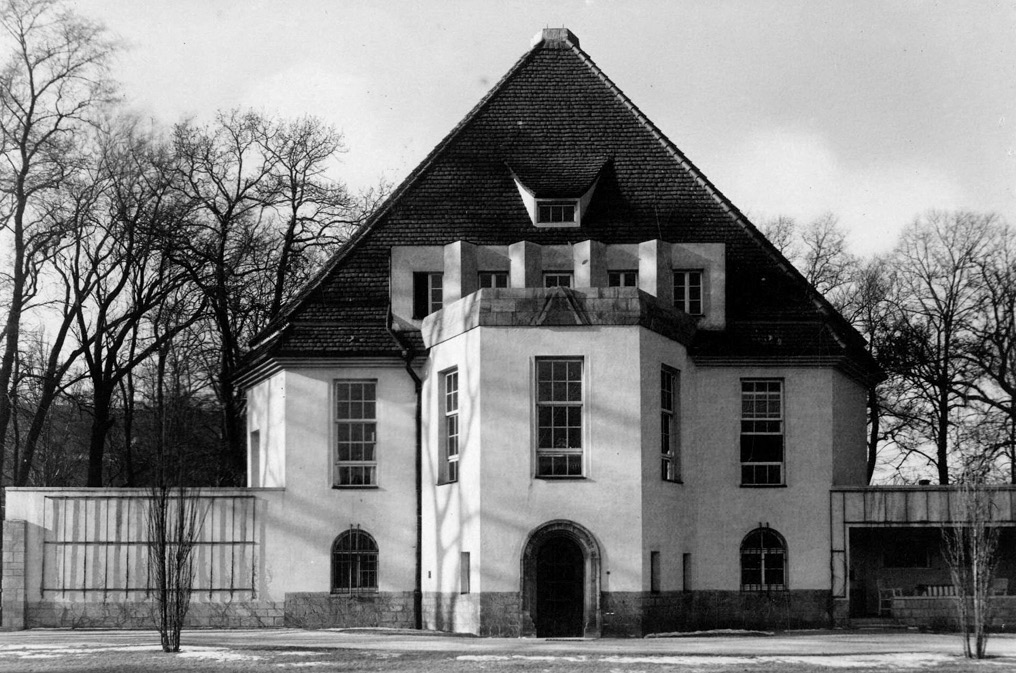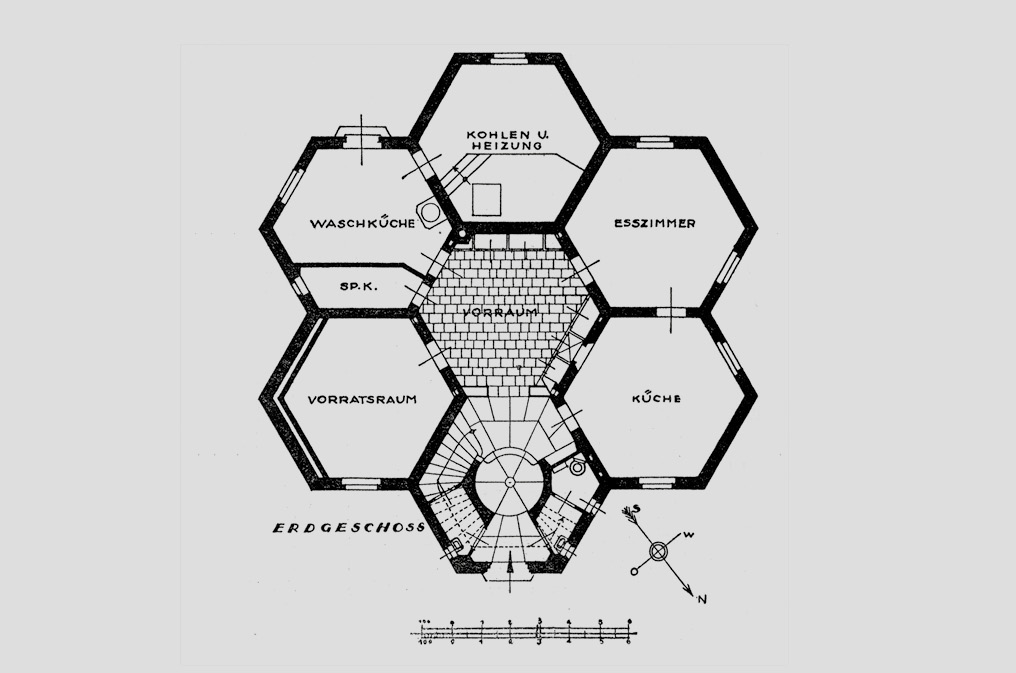32
Haus Ulrich (Villa Of the Seven honeycombs)
The key to Wilhelm Ulrich’s Expressionist concept of architecture is his own house, built on Ratswerder in 1924. The ground plan comprises seven equilateral hexagons, laid out to make one big hexagon. Around the hexagonal core, the architect arranged six identically shaped rooms on each of the lower two storeys. The steep pyramid-shaped roof looks as if it has been pulled down low over the house. Because it was built on the bank of the River Saale, the three-storeyed house has no cellar; larder, scullery and boiler room were on the ground floor along with the kitchen and dining room. The bedrooms and reception rooms were on the first and second floors.
Taking nature as his model and following the honeycomb principle of a beehive, the architect replaced the more rational rectangle with the organic prototype of the hexagon. The name of the house—‘Seven Honeycomb Villa’—is a reminder of this.
Wilhelm Ulrich’s design constitutes an important contribution to the experimental architecture of the Weimar Republic.

